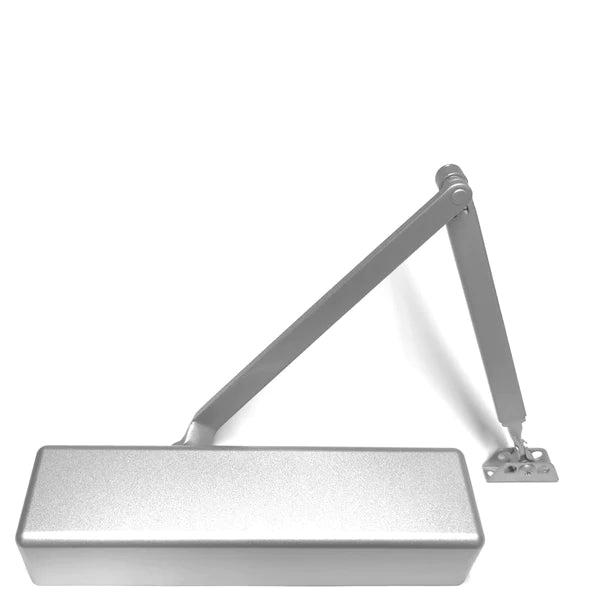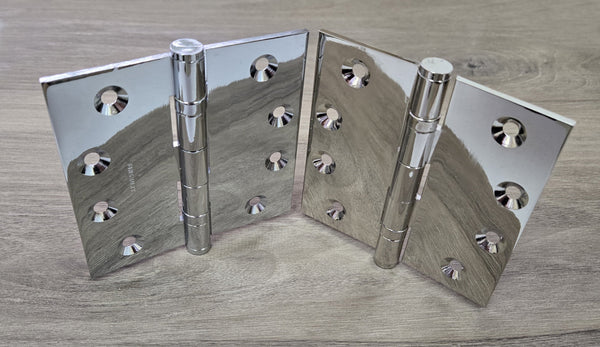In the bustling landscape of commercial spaces, the essence of a perfectly operating door is often undervalued. However, the significance of a smoothly functioning heavy-duty aluminum commercial door closer can't be overstated. It's not just about convenience; it's about safety, efficiency, and maintaining the polished persona of your business. This is why understanding how to adjust your commercial door closer is vital.
Preparing for the Task
Before initiating the process of making adjustments to your door closer, there are a few prerequisites you need to consider:
Necessary Tools
To adjust a door closer, you'll need a few basic tools. Depending on the type of adjustment screws on your closer, you may require a screwdriver, a hex key, or a small wrench. Have these tools readily available before starting the process.
Understanding Your Door Closer
A commercial door closer is a hydraulic device that regulates the closing speed of the door. Typically, it consists of three adjustable valves that work in conjunction to ensure smooth door closure:
- Backcheck: Prevents the door from opening too swiftly, thus protecting against slamming.
- Sweep (Main Speed): Regulates the speed of the door from its open position to a few inches away from latching.
- Latching Speed: Controls the speed of the door in the final few inches of its closing cycle.
Uncovering the Adjustment Valves
If the adjustment valves aren't visible, this suggests that your door closer has a cover that needs to be removed. Loosen any fasteners and slide off the cover. If there aren't any fasteners, you can simply pull off the cover.
The Three-Step Adjustment Process
Mastering the art of how to adjust your commercial door closer involves three major steps: closing the valves, adjusting the backcheck, and fine-tuning the sweep and latching speeds.
Closing the Valves
Initiate the process by closing the three adjustable hydraulic valves. Turn them clockwise until they come to a halt.
Adjusting the Backcheck
Next, make 1.25-1.5 counterclockwise turns to adjust the backcheck. Open the door and ensure it doesn't swing open too quickly. The backcheck should slow down the opening swing at about 75 degrees, preventing the door from slamming into the wall or being caught by the wind.
Fine-tuning the Sweep and Latching Speeds
Now, adjust the sweep and latching speeds. Make 1.5-2 counterclockwise turns for each valve. For the sweep speed, turning the valve clockwise slows down the closing speed, while counterclockwise turns increase it.
For the latching speed, increase the speed (via counterclockwise turns) for exterior doors and slow it down (via clockwise turns) for interior doors to prevent slamming.
Testing the Adjustments
After making the necessary adjustments, it's time to test the door. Open and close it a few times to assess the efficacy of the adjustments. Remember, even a slight turn can significantly alter the door's speed, so make fine adjustments as needed.
Troubleshooting Common Issues
Even after adjusting your commercial door closer, you may encounter some issues. Here are some common problems and their solutions:
The Door Closes Too Slowly
This issue can be resolved by adjusting the close swing speed. Locate the screw labeled "S" and turn it clockwise to speed up the door closure, or counterclockwise to slow it down.
The Door Isn't Latching Properly
If the door isn't latching properly, you need to adjust the latching speed. Locate the screw labeled "L" and turn it clockwise to increase the latching speed, or counterclockwise to decrease it.
The Door Slams Into the Wall
To prevent the door from slamming into the wall, you need to adjust the back-check feature. Find the screw labeled "B" and adjust it as needed.
The Door Starts Closing Too Quickly
If the door starts closing too quickly, you need to adjust the delayed action. Find the screw labeled "D" and adjust it as required.
Looking for Signs of a Faulty Door Closer
Despite all your efforts to adjust the door closer, there might be instances where the door still doesn't operate as desired. In such cases, it might be time to replace the door closer. Indications of a faulty door closer include oil in the cover or leaking from the body, implying broken seals.
Choosing a Suitable Replacement
If the need arises to replace your commercial door closer, consider the following factors and Shop Our Selection to find the perfect match:
- The size and weight of your door
- The door's location
- The frequency of door operation
- The mounting options
- The type of closer being replaced
- The back-check and code requirements
Legal Requirements
For certain facilities like healthcare centers, operational door closers are a legal requirement. They serve as an essential safety feature during emergencies, slowing the spread of smoke and fire by ensuring automatic door closure.
The Benefits of a Well-Adjusted Door Closer
A well-adjusted door closer not only aids in efficient door operation but also contributes to the overall safety and professional image of your commercial space. It ensures smooth foot traffic, reduces the risk of door-related accidents, and enhances the longevity of your door.
The Role of Professional Assistance
While adjusting a commercial door closer might seem straightforward, the process can be intricate. Professional assistance can prove beneficial and ensure proper door operation. Moreover, professionals can provide valuable advice regarding door closer maintenance and replacement.
Wrapping Up
Understanding how to adjust your commercial door closer is a crucial aspect of maintaining a safe, efficient, and professional business environment. By following the steps outlined in this guide, you'll be well-equipped to ensure the smooth operation of your commercial doors and uphold the high standards your business aspires to.
Remember, if you encounter any issues while adjusting your door closer, don't hesitate to seek professional assistance. With the right knowledge and expertise at your disposal, you'll be able to master the art of door closer adjustments and ensure the longevity and efficiency of your commercial doors.



